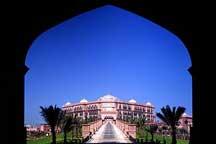 Apr. 16, 2025
Apr. 16, 2025
Weather
The Yao ethnic minority
2009-08-07 11:40 BJTHistory
Called the "savage Wuling tribes" some 2,000 years ago, the Yao ancestors lived around Changsha, capital of today's Hunan Province. Two or three centuries later, they were renamed the "Moyao." One of China's foremost ancient poets, Du Fu (712-770), once wrote: "The Moyaos shoot wild geese; with bows made from mulberry trees."
As time went on, historical accounts about the Yaos increased, showing growing ties between the Yao and the Han people. In the Song Dynasty (960-1279), agriculture and handicrafts developed considerably in the Yao areas, such that forged iron knives, indigo-dyed cloth and crossbow weaving machines became reputed Yao products. At that time, the Yaos in Hunan were raising cattle and using iron farm tools on fields rented from Han landlords.
During the Ming and Qing dynasties (1368-1911), farm cattle and iron tools spread among the Yaos in Guangxi and Guangdong, who developed paddy fields and planted different kinds of crops on hillsides. They dug ditches and built troughs to draw water from springs for daily use and irrigation. Sideline occupations such as hunting, collecting medical herbs, making charcoal and weaving were pursued side by side with agriculture.
Before the founding of the People's Republic, the Yao economy could be divided into three types:
The first and most common type, with agriculture as the base and forestry and other sideline occupations affiliated, was concentrated in places blessed with fine natural conditions and the greatest influence of the Hans. Here farming methods and social relations very much resembled those of the Han and Zhuang ethnic groups.
 Mail
Mail Share
Share Print
Print


 Video
Video









 2009 China Central Television. All Rights Reserved
2009 China Central Television. All Rights Reserved